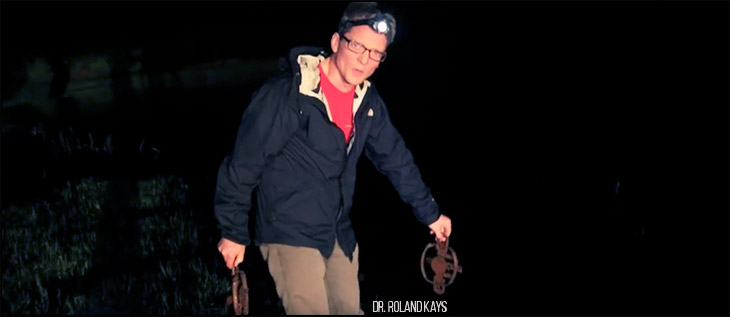On the Trail of the Egret
In the predawn darkness at Pine Island Sanctuary and Audubon Center in Corolla, NC, scientists are shaking off sleep and preparing for a morning of trapping and tagging. Their quarry is the egret, and there are an assortment of the elegant genus that call the North Carolina wetlands home for part of the year. Just how early is it? “It’s bird-thirty,” one of the team mumbles as he makes his way toward the coffee pot.

Until recently, the chore would only involve capturing a bird, placing a plastic or aluminum tag on one leg, and releasing it. After migration, the hope was that the animal might eventually be found, and scientists could record the information about the distance covered. Yet the question would remain: what happened between the banding and the recovery? There were still many holes in the scientific knowledge.
Egret Data: Trapping and Transmitting
Enter Dr. John Brzorad, ornithologist with Lenoir-Rhyne University. In addition to banding, Brzorad plans to place a small transmitter on Great Egrets that he traps. The transmitter will provide real-time information on exactly where the birds travel as they wend their way to breeding territory. This will help scientists learn about the route and where they rest (if at all) along the way. Such data could inform land management decisions in states where the birds travel. Even when they are not migrating, telemetry will enable scientists to determine how nesting egrets go through their day, how they forage for food, and what types of habitat make the best nesting grounds. (Learn more about telemetry from the Migratory Connectivity Project.)
The group will place decoys and a container of fish in a wetland, then pepper the surrounding area with the traps. Unlike other captures where the birds are caught in a “mist net” (think very thin and flexible volleyball nets that tangle the birds), Brzorad will use leg traps for this expedition. While the traps may look alarming, the jaws are actually made of hard rubber and use only enough tension to hold the bird in place until the team can grab it. That’s a far cry from past methods of “capture.”

From Fashionable Feathers to Egret Conservation
During the late 19th century, birds such as egrets were nearly wiped out in an international feather craze. The long plumes that egrets grow to impress potential mates were in high demand, and egrets and other species of birds were nearly driven to extinction in the pursuit of fashion. At one point, a pound of feathers was valued at more than double the price of a pound of gold. In the early 1900s, out of concern for the wholesale slaughter of the birds, the newly formed National Audubon Society chose the Great Egret as its first species targeted for preservation. Since that time, the Great Egret has made a comeback, and that success was memorialized when Audubon chose the bird as its symbol. It’s that bird, along with its cousins, that the team is hoping to tag today.
Success: Egrets in a Trap
After waiting and watching, the birds begin to take the bait, and one is trapped. The team moves quickly to keep the bird from injuring itself, and Dr. Brzorad covers the head with a towel. This calms the bird, and makes it less likely that someone will be impaled by an imposing beak. They manage to capture a number of species of egrets, including Snowy Egrets, Glossy Ibis, Tricolored Heron, and a Cattle Egret, as well as the Great Egret. Each bird will be sexed, weighed, and measurements taken of its bill and legs.
When it comes to the Great Egret, Brzorad bands the bird, but he also straps a GPS device to it. The tool is carefully chosen: the customary rule is that a tracking device should weigh no more than three to five percent of the bird’s total body weight. In this way, the bird can function perfectly, and neither the weight nor its attachment will inhibit its life.

In the case of this bird, the signal from the device is monitored in real time. At one point in its migration, it had moved all the way from North Carolina to Niagara Falls, and Brzorad was able to monitor the whole journey.
The Video: Watch Brzorad Tag Egrets
Fly with the Egret
If you’d like to track the migration of birds or a whole host of other animals around the world, check out the AnimalTracker App that has info stored on movebank.org. From the home page, click the tab marked “Help”, and then “Getting Started.” The instructions will allow you to register (for free) and choose from hundreds of projects that scientists have made available to the public. Not every project is viewable, but the curious will find an abundance of information that is helping conservation efforts around the globe.
The Tracking App: AnimalTracker
Recently we got the chance to interview Dr. Roland Kays about the new Animal Tracker App
































































































